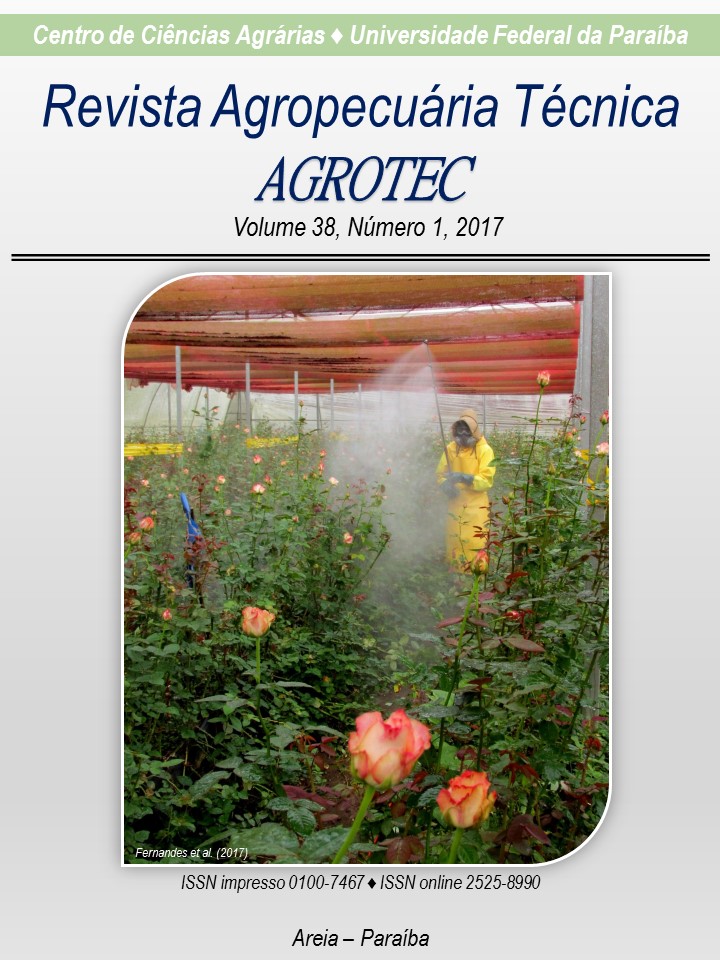Leaf area estimation of <i>Urochloa mosambicensis</i> by linear dimensions
DOI:
https://doi.org/10.25066/agrotec.v38i1.32041Keywords:
Leaf limb, Modeling, Non-destructive method, Urochloa mosambicensisAbstract
The measurement of the leaf area is required in severalagronomic studies as one of the main parameters to evaluate plant growth. Aimed to select the best models to estimate leaf area of Urochloa mosambicensisusing a non-destructive method based on linear dimensions of length and maximum width of the leaf. Randomly, there were collected 96 green leaf of the Urochloa mosambicensisunder different growth stages. There were measured the length and width of each leaf limb using a digital caliper ruler, and the leaf area was measured using a gravimetric method. Thebest estimation model of leaf area was selected through of regressions using linear, potential and gamma models. The leaf area values oscillated from 1.238,1 mm2to 158.73 mm2, being the average value 602.7 mm2. The potential regression model showed higher determination coefficient (99.99%) and lower residual sum of squares(153092.7)and Akaike's information criterion (-244.958). Therefore, it was more efficient to explain the leaf area of Urochloa mosambicensiswhen compared with other models evaluated in this research. The potential model, y = (C x L)0,968,could be used to determinate leaf area of Urochloa mosambicensisusing the length and width of leaf limb. The adoption of this model allows the non-destructive, high-precise, quick and low-cost estimation of leaf area of the Urochloa mosambicensisusing only the length and width of leaf.


